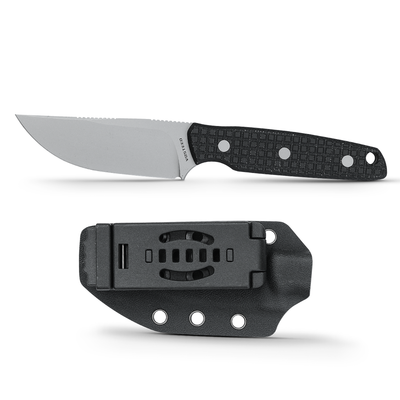Unlock Your Adventure: The Ultimate Survival Blade Awaits!
When it comes to outdoor adventures, having a reliable survival fixed blade knife can make all the difference. Whether you’re hiking through rugged terrain, camping in the wilderness, or facing an unexpected emergency, this versatile tool is essential. A survival fixed blade knife is not just a cutting instrument; it's a lifeline, a companion that can aid in everything from food preparation to shelter building. In this article, we aim to guide you through the process of selecting the right survival knife for your needs, ensuring you are well-equipped for your next adventure.

Understanding Survival Fixed Blade Knives
A survival fixed blade knife is a robust and durable tool designed for various outdoor tasks. Unlike folding knives, a fixed blade knife has a blade that does not fold into the handle, providing greater strength and stability. These knives are typically characterized by a full tang, meaning the blade extends through the handle, enhancing balance and control. The importance of blade material cannot be overstated; high-carbon steel is often preferred for its edge retention and ease of sharpening, while stainless steel is valued for its corrosion resistance. Size and design also play a crucial role; a blade length of 4 to 10 inches is considered ideal for most survival scenarios, offering enough cutting power for various tasks without being unwieldy.
Key Features to Consider When Choosing a Survival Knife
When selecting a survival fixed blade knife, several critical features should be taken into account. Blade length is paramount, as it influences the knife’s versatility; a longer blade is suitable for larger tasks, while a shorter blade allows for finer work. Thickness is another essential factor; a thicker blade can withstand more force and is less likely to break. Handle material should also be considered; materials like G-10 or Micarta provide excellent grip in wet conditions, while tang type—whether full, partial, or rat-tail—affects both strength and balance. Each of these features contributes to the knife’s overall performance, making it essential to choose wisely based on your intended use.
Different Types of Survival Fixed Blade Knives
Survival fixed blade knives come in various styles, each tailored for specific applications. Bushcraft knives are designed for traditional outdoor skills like carving and woodcraft, featuring a thin blade for precision tasks. Tactical knives, on the other hand, are built for self-defense and survival situations, often incorporating serrated edges or additional safety features. General outdoor knives are versatile tools that can handle a range of tasks, from food prep to emergency situations. Understanding the distinctions between these types will help you choose a knife that best aligns with your needs and preferences, ensuring you have the right tool for any scenario.
Maintenance and Care for Your Survival Knife
Proper maintenance is vital for ensuring the longevity and optimal performance of your survival fixed blade knife. After each use, clean the blade thoroughly with warm, soapy water to remove any debris or moisture that could lead to corrosion. Dry it completely before storage. Sharpening is another essential task; using a whetstone or sharpening system will help maintain a keen edge, allowing for efficient cutting. It’s also wise to store your knife in a dry environment, preferably in a sheath, to protect both the blade and the handle. By following these maintenance tips, you can ensure that your knife remains a reliable companion on all your outdoor adventures.
Empower Your Outdoor Experience with the Right Knife
In summary, a quality survival fixed blade knife is an indispensable tool for anyone venturing into the great outdoors. Understanding the various types, key features, and maintenance requirements will empower you to make an informed decision when selecting the right knife for your adventures. Remember, the right survival knife should be an extension of your hand, ready to assist you in any situation. Take the time to explore your options and choose a knife that meets your specific needs, ensuring you’re fully prepared for whatever nature throws your way.







